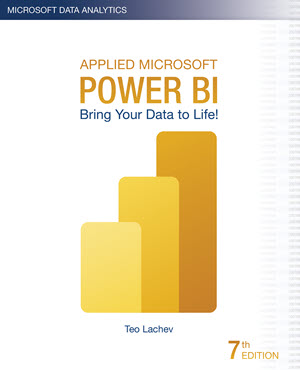First Look at Fabric Translytical Task Flows
The May release of Power BI Desktop includes a new feature called Translytical Task Flows which aims to augment Power BI reports with rudimentary writeback capabilities, such as to make corrections to data behind a report. Previously, one way to accomplish this was to integrate the report with Power Apps as I demonstrated a while back here. My claim to fame was that Microsoft liked this demo so much that it was running for years on big monitors in the local Microsoft office!
Are translytical flows a better way to implement report writeback? I followed the steps to test this feature and here are my thoughts.
The Good
I like that translytical flows don’t require external integration and additional licensing. By contrast, the Power Apps integration required implementing an app and incurring additional licensing cost.
I like that Microsoft is getting serious about report writeback and has extended Power BI Desktop with specific features to support it, such as action buttons, new slicers, and button-triggered report refresh.
I like that you can configure the action button to refresh the report after writeback so you can see immediately the changes (assuming DirectQuery or DirectLake semantic models). I tested the feature with a report connected to a published dataset and it works. Of course, if the model imports data, refreshing the report won’t show the latest.
The Bad
Currently, you must use the new button, text, or list slicers, which can only provide a single value to the writeback function. No validation, except if you use a list slicer. From end user experience, every modifiable field would have a separate textbox. Ideally, I’d like to see Microsoft extending the Table visual to allow editing in place.
Translytical flows require a Python function to propagate the changes. Although this opens new possibilities (you can do more things with custom code), what happened to low-code, no-code mantra?
The Ugly
Currently, the data can be written to only four destinations:
- Fabric SQL DB (Azure SQL DB provisioned in Fabric)
- Fabric Lakehouse
- Fabric Warehouse
- Fabric Mirrored DB
Notice the “Fabric” prefix in all four options? Customers will probably interpret this as another attempt to force them into Fabric. Not to mention that this imitation excludes 99% of real-life scenarios where the data is in other data sources. I surely hope Microsoft will open this feature to external data sources in future.
So, is the Power Apps integration for writeback obsolete? Not really because it is more flexible and provides better user experience at the expense of additional licensing cost.
In summary, as they stand today, transalytical task flows attempt to address basic writeback needs within Fabric, such as changing a limited number of report fields or performing massive updates on a single field. They are heavily dependent on Fabric and support writeback to only Fabric data sources. Keep an eye on this feature with the hope that it will evolve over time to something more useful.





